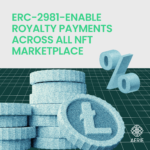Device-Side Encryption: Why is it Better?
When you think of encryption, you might assume it’s something only tech-savvy people understand or use. But the truth is, encryption is a lot simpler than it seems. It’s just a way of using mathematical algorithms to make sure that data can only be read by the right person.
Nowadays, we’re always connected to the internet. We’re shopping, sharing, consuming content on social media, and browsing the web. All these data are stored somewhere. Most of us don’t even know where that “somewhere” is, and usually, it’s the service provider that has access to it first. But this need not be the case in Web3.
What does encryption do?
Encryption helps to protect the privacy of digital information stored on computers or transmitted over the internet or any other computer network. It’s like a secret code that keeps your data safe from prying eyes, ensuring that only those with the right key can access it. Organizations and standards recommend or require encryption to protect sensitive data from unauthorized individuals or third parties.
The disadvantages of encryption
Encrypting data is a resource-intensive process, requiring extra computing power to package, prepare, decrypt, or read the data. It is an extra step to the process, taking up more time and energy. Encrypted data is essentially ‘locked’ in a unique format, making it inaccessible to unauthorized individuals. However, there are certain cases where the data’s owner may not be able to access it either, which can lead to other potential issues in decryption or recompilation.
Secure encryption is like having your own personal set of keys — each designed to unlock a specific lock. Just like a physical key, digital encryption keys work to both lock and unlock data. But the tricky part of encryption is key management — making sure the keys that decrypt the data are stored safely and not accessible to attackers. Somehow, they usually know where to look for them.
For example, while an ‘end-to-end encrypted’ chat messaging service like WhatsApp can secure the messages exchanged between two parties, if WhatsApp has a copy of the encryption keys (which they do), they can themselves decrypt the content in that ‘end-to-end encrypted’ chat.
Having a reliable key management system is essential for the maintenance of successful or secured encryption standards. But it can make backing up and restoring data a bit more complicated. In the event of a disaster, retrieving and adding keys to a new backup server could take some extra time.
How is NEST® encrypted?
NEST® provides an extra layer of security with its cutting-edge encryption protocols and standards. These include PGP, RSA, AES, MPC, and more, all set to the users’ password and held in a purely non-custodian manner. This means that at no point during any form or transmission, exchange or activity does NEST® retain or store a copy of the encryption keys. This setup provides a highly secure, individually encrypted, and decentralized environment, where the user is in charge and owns the encryption keys. It prohibits multiple forms of attacks that other wallets cannot prevent. Furthermore, NEST® is a quantum-proof data storage solution, using confidentially held real-world identification and individual forms of encryption that are further secured directly by your device — making it the ultimate safe haven for your data!
And from this, we also enhance private communications. Unlike most apps, NEST® can never spy on or decrypt your data without your explicit permission.
So, what exactly is device-side encryption?
Device-side encryption is an excellent way to safeguard your data — it encrypts it on your device before sending it over a network or stored in the cloud. This type of encryption helps to protect data from being accessed by unauthorized parties, even if the device is lost or stolen. Not only is the format or type of encryption strengthened through a combination of the device itself — device-side encryption ensures that no unencrypted data is ever transmitted.
Rather than having your data sent to an external server for encryption, device-side encryption stores the encryption keys on the device itself, helping to keep your data secure. This is a much more secure way of encrypting data, compared to server-side encryption, where the data is encrypted on an external server and then transmitted or stored. Without device-side encryption, data is sent to an external location to be encrypted, leaving a major security risk — not a good idea!
So here are the advantages of device-side encryption compared to other types:
Enhanced security: Device-side encryption is powerful. It makes it exponentially more challenging for unauthorized parties to gain access to data. It also helps to protect against attacks that target servers and network infrastructure. Without a copy of the encryption key, data cannot be decrypted, so those looking to access others’ information or exchanges are out of luck.
Decreased dependence on third-party providers: Organizations can take control of protecting their data with device-side encryption, freeing them from relying on third-party providers.
Faster Performance: Encrypting and decrypting data on-device rather than in the cloud is faster and more efficient, making it so much quicker and easier.
More flexible: Organizations have the freedom to customize their data security with device-side encryption, selecting the encryption algorithms and key management methods that best fit their needs.
What happens if I lose my device?
No problem! On NEST®, you can quickly get your account back with your phone number, password, and pin on a different device. Plus, you can upload your encrypted NEST® key file to your new device to regain access to your account.
NEST® gives you the choice to download and store your encryption key in any way you choose. Just remember to keep it private and safe, and don’t share it with anyone else!
You can easily store your credentials on your device and enjoy the convenience of hardware wallet integrations and future logins. With ZKP (Xero Knowledge Proof) login, you can securely validate your private keys without revealing any user data to the network and the hosting system.
Final Words
NEST® provides you with a highly secure and personally-encrypted environment. Your data and digital assets are encrypted by you to your (and only your) device, making phishing scams or wallet exposures impossible.
Once again, your data, files, and keys do not sit on servers or open networks, unlike other platforms. NEST® keeps your data safe and sound with our double-encryption technology. Your information is broken down into pieces and stored in various secure locations around the globe. You are the only one with the power to unlock it.









